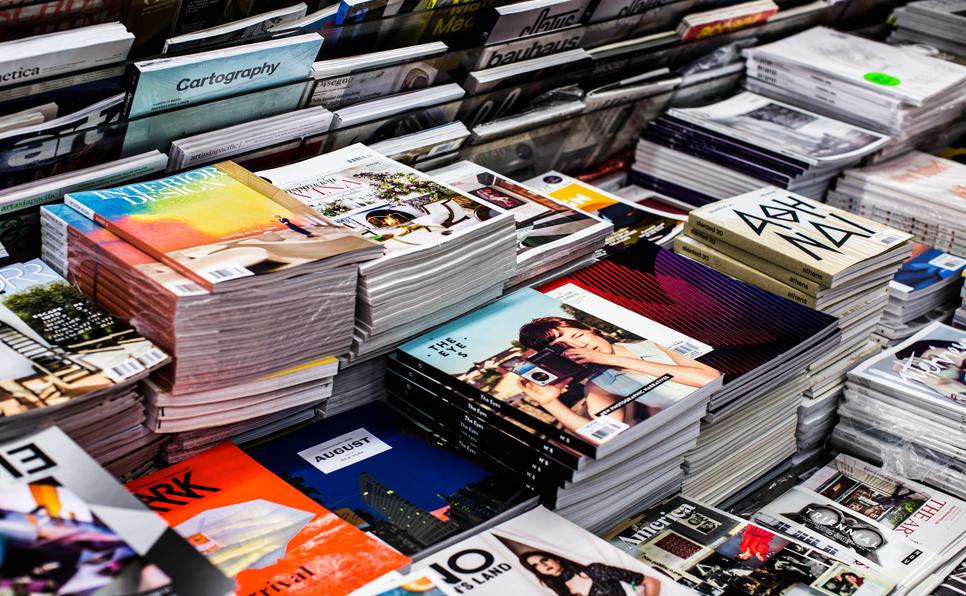What is an Imprint? A Division of a Larger Publisher
An imprint is a trademark or business name of a smaller publisher’s press that frequently releases books that cater to particular markets and readership segments. For instance, the sizable publishing house Penguin Random House has numerous smaller imprints, including Alfred A. Knopf, Penguin Classics, Everyman’s Library, and Doubleday.
Most imprints are made using one of the methods listed below:
- A publisher establishes an imprint from the start to target a specialized readership that doesn’t align with their primary brand identification.
- a publisher buys or merges with another publisher, allowing the smaller organization to maintain its branding while operating as an imprint of the larger company.
- In order to establish credibility, get their own ISBNs, or publish other writers, a self-published author registers an imprint.
If you’re still not entirely sure what imprints are or why they’re important, don’t worry; we’ve consulted with three Reedsy editors who have previous experience working for the “Big 5” publishers and gathered all the information you need about imprints in this piece.
- Imprints frequently operate in a specific area or niche.
- Imprints gain access to their parent company’s resources.
- Readers typically don’t stick with imprints
- Independent writers can create imprints
Imprints often work within a niche or territory
Imprints exist in many shapes and sizes, but one of their key characteristics and advantages is that they frequently produce a line of books that work together to fill a particular gap in the market. A publishing house might be divided into modern literature, children’s books, and classics, for example. This is similar to how H&M is divided into H&M Kids, H&M Home, and H&M Sport. Imprints, according to Dominic Wakeford, a former editor at Hachette and HarperCollins, are “basically divisions of the same corporation in the same building.”
It all boils down to making the right match, in this case between an imprint’s brand identity and a target audience, much like the imprinting of werewolf romance plotlines (looking at you Twilight). Alyssa Matesic, editor of Reedsy and a former employee of Penguin Random House and Macmillan, affirms this:
However, some imprints are more specialized than others, according to Aja Pollock, a Reedsy editor who has worked with Penguin Random House, Macmillan, and HarperCollins:
“Anything from Tor is going to be sci-fi or fantasy; Howard publishes Christian books; etc., but a lot of imprints have pretty vague mission statements that amount to ‘We publish stuff we think is interesting!’”
This can give the impression that imprints are just a fancy way for the powers that be to better manage their editorial staff and marketing expenditures, but a strong brand identity and a successful imprint can offer readers a sense of what to expect from the books they publish.
As an illustration, consider a few of Penguin Random House’s imprints: While Doubleday concentrates more on recent commercial and literary literature, Penguin Classics reprints classic books.
While Doubleday’s modern titles will appeal to people who use bookstagram or who color-categorize their book shelves, Penguin’s black classics may draw readers with a “serious” interest in knowledge or culture due to their black spines, traditional cover motifs, and lengthy introductions.
Practically speaking, concentrating on a certain niche makes it simpler for the editorial team of an imprint to maintain their finger on the pulse of their target readers rather than having to keep an eye on trends throughout the entire industry. Additionally, it enables more specialized hiring because they may draw editors who have a passion for and background in that genre or category.
To further understand how it functions, let’s take a look at one of the “Big 5” publishers, Simon & Schuster, and some of their imprints.
Example: Simon & Schuster

In addition to publishing under the brand name Simon & Schuster, the company also has a number of imprints that are divided into groupings based on the broad market area they are aiming for. There’s:
- Publishers Simon & Schuster for Adults
- Publishing for children by Simon & Schuster
- Simon & Schuster International and
- Simon & Schuster Audio Publishing (covering Australia, Canada, India, and the UK).
Each of these divisions has a number of well-known imprints, some of which have histories all of their own while others were developed by the main publisher, and collectively they add to Simon & Schuster’s entire production. According to Alyssa Matesic:
Some examples include:
Senior: Scribner
By owning the rights to contemporary classics and publishing well read books by authors like Stephen King and Anthony Doerr, Scribner keeps building its enduring reputation.
Adult: Avid Reader Press
Simon & Schuster established Avid Reader Press in 2018. With books like Animals by Lisa Taddeo and Vladimir by Julie May Jones, their brand identification leans toward high-end fiction.
Adult: Atria Books
Atria Books, which publishes authors including Akwaeke Emezi, Fredrik Backman, Colleen Hoover, and Lisa Jewell, aims to create a space for fresh perspectives and voices in the commercial and upmarket fiction genres.
Children’s: Aladdin Books
Aladdin Books is a division of Simon & Schuster Children’s Publishing, and it produces a variety of children’s books. They feature award-winning titles and writers, including Black Ballerina by Misty Copeland, the Mindy Kim series by author Lyla Lee and illustrator Dung Ho, in their chapter books, graphic novels, and picture books.
Audio: Pimsleur
When Simon & Schuster bought the well-known language study tool Pimsleur in 1995, they also entered the audio and educational markets. The product, which was initially offered as CDs to bookstores and through mail order, is now mostly sold as course packages that are accessible online or through a subscription app.
Simon & Schuster is able to reach a wide audience and offer niche publications for a variety of readers thanks to these and many other imprints. Both small and large imprints have the ability to compete in the major leagues thanks to the support of a strong parent publisher.
Imprints benefit from the resources of their parent company
If you’re wondering how resources are divided up among imprints, the answer is that it varies from publishing house to publishing house. However, according to Aja Pollock and Dominic Wakeford, imprints typically share production, design, and sales teams with their stablemates while maintaining their own editorial and marketing staffs. Wakeford also points out that while some larger, more established imprints might receive a larger share of the resource pie, the majority of traditional imprints, regardless of size, all gain from being affiliated with a strong parent company.
Getting books into stores
The power to get books into stores and in front of readers is maybe the largest benefit of having a major parent business. Wakeford cites the fact that imprints don’t necessarily need to schedule individual meetings with major book merchants in order to get their works into establishments like Barnes & Noble and Waterstones. Instead, the parent publisher’s combined sales staff will meet with them once, usually for a full day, to pitch all of their titles across all of their imprints.
Their skilled sales teams can wrangle books from their various imprints into window displays, email newsletters, facing outwards on shelves, or included in various in-store promotions. They can do this because they are able to offer booksellers discounts on specific titles, access to famous authors for in-store signings, and other kinds of benefits.
The goal is to get the book in front of readers and retailers; once the average reader has a promising new book in their hands and is standing in a store, they don’t really care about the name or size of the imprint that published it.
Readers aren’t usually loyal to imprints
Readers typically don’t care what imprint a book is published under as long as the cover and blurb meet their expectations, despite the fact that publishers and retailers may pay close attention to the branding of individual imprints. According to Wakeford, “the outward branding doesn’t mean an awful lot to the average consumer” and is primarily used by publishing professionals to distinguish between titles and branding
Even though some voracious readers may have favorite publishers that they favor and associate with writing genres or styles they like, they typically don’t let that stop them from purchasing books from other publishers. Consider readers as serial polygamists who frequently switch between publishers and imprints; if the marketing is effective and catered to the right market, they won’t care much about labels and logos. They have that kind of open mind.
However, this rule does have a few exceptions.
Setting up your own imprint
You must register a Fictitious Firm Name (FBN) or a Doing Business As (DBA) certificate with the appropriate authorities in your nation and/or state, set up your business for taxation, and secure a business license in order to establish your own imprint. After that, you may purchase your own ISBNs on websites like Nielsenisbnstore.com or Bowker.com using your imprint name.
Of course, there is a little more to founding an imprint; for a more thorough explanation, see our piece on launching your own publishing business.


